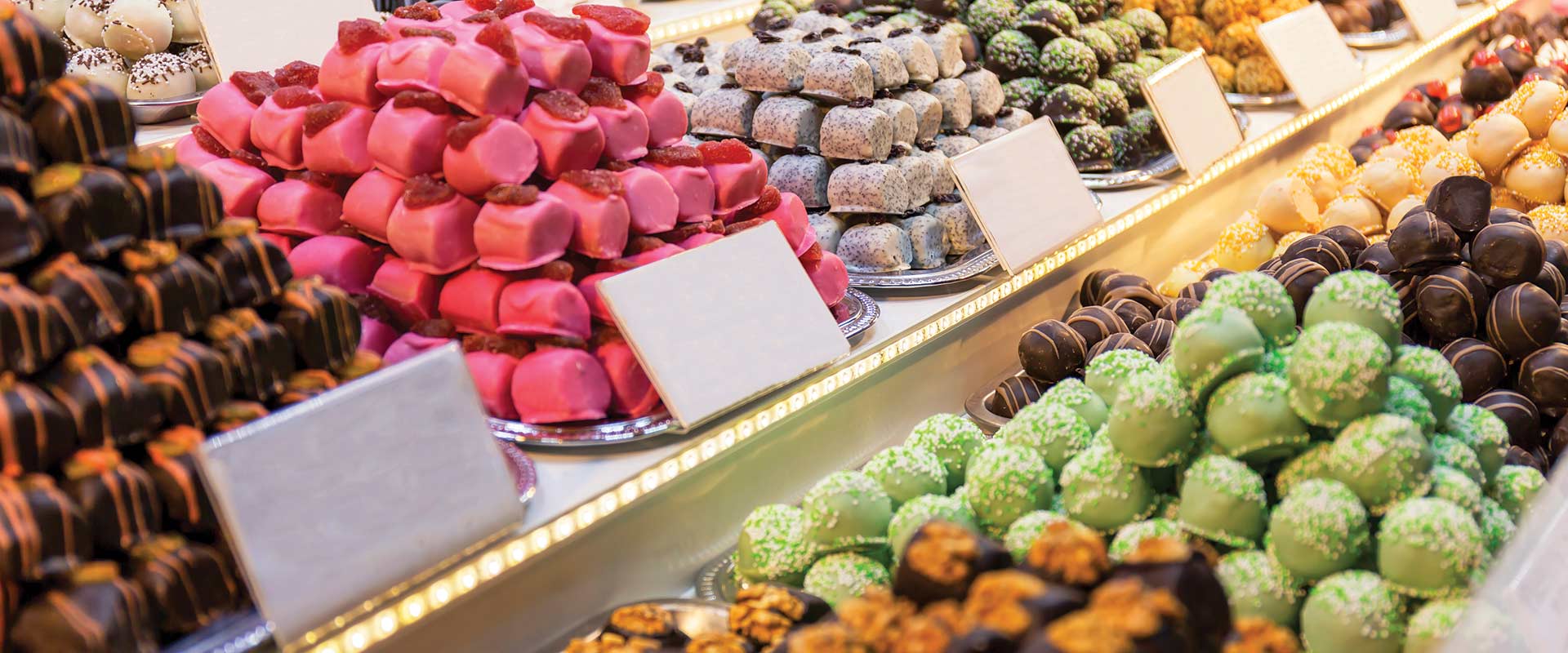Four Central European Cities for Foodies
Creamy tortes, gingerbread, smoked beer… make sure these Central European treats are on your itinerary, writes Ute Junker.
Elegant cities, royal palaces, magnificent museums. There is so much to love about Europe that we sometimes overlook one of its most impressive offerings – gastronomic delights. Right across the continent you will find delicious regional specialties, handmade by artisans following ancient traditions. Sink your teeth into some of these memorable treats when you’re next on a Europe river cruise.

1. Wurzburg
Mention German wine and most people will think of the Rhine and Mosel Valleys. However, within Germany, the wines made in and around Wurzburg, known as Franken wines, are just as famous. It’s no surprise that the locals know a thing or two about wine – their winemaking tradition stretches back 1,200 years. In Wurzburg’s charming old city, shop windows are filled with the distinctive local wine bottles, a flat, rounded shape known as the bocksbeutel. Franken wines are mainly whites. Try Silvaner, which has a fruity floral aroma and a dry finish, or Muller-Thurgau, a light, easy-drinking wine.
One more thing
The magnificent Wurzburg Residence is the town’s most famous attraction, and rightly so. However, many visitors miss the hidden gem lying beneath the Residence: the wine cellar of the Wurzburg prince-bishops. Hidden away in this vast warren of cellars and tunnels are 100 of the biggest wooden barrels you will ever see, each containing a massive 120 litres of wine.

2. Bamberg
Bamberg is not just one of Germany’s prettiest towns, it is also the country’s unofficial beer capital. There are 11 working breweries in town – not to mention another 60 breweries in the surrounding district – producing as many as 400 beers all up. The town’s signature drop is rauchbier, or smoked beer, made with malted barley that has been dried over burning beech logs. The beer is known for its distinctive colour and smoky flavour. One of the best places to try it is at the atmospheric Schlenkerla brewery, housed in a 600-year-old, half-timbered tavern in the heart of the old town. If you’re feeling peckish, the Schlenkerla also offers hearty meals.
One more thing
Bamberg has scored a World Heritage listing for its beautifully preserved cityscape. Don’t-miss highlights include the mighty cathedral and the eye-catching town hall, which is built on an island in the river.

3. Nuremberg
In Germany, it’s not Christmas without gingerbread, or lebkuchen as it is known. But nowhere does lebkuchen quite like Nuremberg. The recipe (a tightly guarded secret for 600 years) mixes local honey with ingredients that were once considered exotic, including pepper, ginger, cinnamon and almonds. The sweet and spicy recipe could only have evolved in Nuremberg, where Europe’s most important trade routes once converged, giving locals access to spices from across the world. Today, Nuremberg’s lebkuchen are more popular than ever, with 70 million produced each year.
One more thing
The best time to buy lebkuchen is during December, when Nuremberg hosts Germany’s most famous Christmas market. While you’re there, make sure you sample a representative selection of the other seasonal treats that are on offer – perhaps a soul-warming gluhwein (mulled wine) and a plate of crispy kartoffelpuffer (potato pancakes).

4. Budapest
The Habsburg dynasty knew a thing or two about how to create an imperial capital. Their first attempt, Vienna – with its palaces, grand boulevards and ornate cafes – turned out so well that when they created another royal city, Budapest, they followed the same formula. The good news for food fans is that Budapest cafes have just as many sumptuous treats to choose from as their Viennese counterparts. The queen of the cakes is the dobos torte, thin layers of sponge alternating with chocolate buttercream, topped with a hard caramel glaze. For an added treat, relish it in one of Budapest’s historic cafes, such as Cafe Gerbeaud or Central Kavehaz.
One more thing
If you prefer your sweet treats in a glass, you’ll love Hungarian Tokaji wine. This topaz-coloured sweet wine has long been a favourite of such connoisseurs as Beethoven, Liszt, Russian Emperor Peter the Great and French King Louis XIV, who coined the description “wine of kings, king of wines”.
Take to Europe's historic waterways on our 15 Day Magnificent Europe river cruise to enjoy these city destinations and their delicious gourmet hallmarks, found along the Main and Danube rivers from Wurzburg to Budapest.

